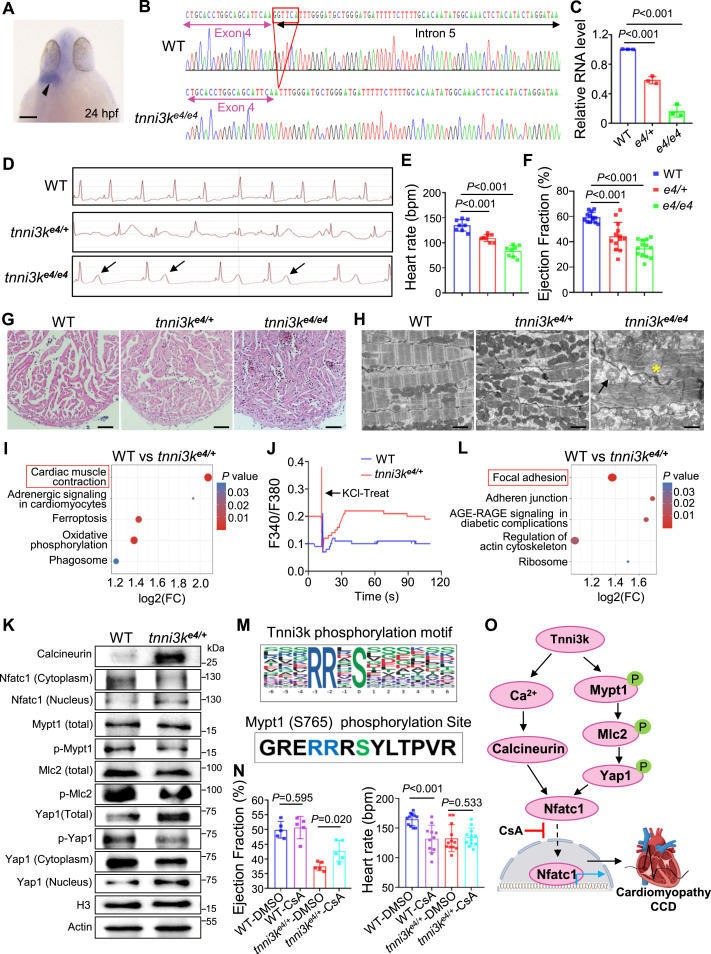
Tnni3k regulates cardiomyopathy and cardiac conduction disease through Nfatc1 signaling


TNNI3K (troponin-I interacting kinase) encodes a duo tyrosine and serine/threonine kinase implicated in cardiomyopathy, arrhythmias, and cardiac conduction disease (CCD).1 However, no direct downstream phosphorylation targets of TNNI3K have been identified yet.2 Here, we employed the CRISPR/Cas9 gene-editing technique to generate a splicing mutation in the 4th exon of zebrafish tnni3k ortholog gene that mimics a TNNI3K splicing variant identified from a patient family with cardiomyopathy and CCD. This tnni3k heterozygous mutant (tnni3ke4/+) recapitulated several key features of cardiomyopathy and CCD, thus representing a novel model of human TNNI3K mutation-based cardiac diseases. Next, we utilized this heterozygous tnni3ke4/+ mutant to perform proteomics and phosphoproteomic analysis. As a result, we identified Mypt1/Mlc2/Yap1/Nfatc1 axis as the downstream phosphorylation targets of Tnni3k. Lastly, we found that treatment of cyclosporine A, an inhibitor of Nfatc1 translocation from cytoplasm to the nucleus, exhibited a partial cardioprotective effect on the tnni3ke4/+ heterozygous mutant. Together, we generated a unique zebrafish animal model of TNNI3K-based cardiac diseases and identified the Mypt1/Mlc2/Yap1/Nfatc1 axis as its downstream phosphorylation targets that could be potentially leveraged to develop new therapeutic strategies.
